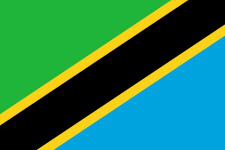BM-27 Uragan
| BM-27 Uragan (9P140) | |
|---|---|
|
BM-27 at the St Petersburg Artillery Museum | |
| Type | Multiple rocket launcher |
| Place of origin |
|
| Service history | |
| In service | 1975 – present |
| Used by | See Operators |
| Wars |
Soviet war in Afghanistan, First and Second Chechen Wars, 2008 South Ossetia war, War in Donbass[1] |
| Production history | |
| Designer | Splav State Research and Production Enterprise |
| Designed | 1970s |
| Manufacturer | Splav State Research and Production Enterprise |
| Produced | 1975 – present |
| Variants | See Variants |
| Specifications | |
| Weight | 20 tonnes (44,092 lbs) |
| Crew | 6 |
|
| |
| Calibre | 220 mm (8.66 in) |
| Barrels | 16 |
| Effective firing range | 35 km (22 mi) |
| Sights | PG-1 panoramic telescope |
|
| |
| Suspension | 8×8 wheeled |
Operational range | 500 km (311 mi) |
The BM-27 Uragan (Russian: Ураган, "hurricane"; GRAU index 9P140) is a self-propelled multiple rocket launcher system designed in the Soviet Union. It began its service with the Soviet Army in the late 1970s, as its first modern spin and fin stabilized heavy multiple rocket launcher.
Description
The BM-27 Uragan is capable of launching 220 mm rockets from 16 launch tubes mounted on the rear of a ZIL-135 8x8 chassis. This vehicle is extremely similar to that used in the FROG-7 free flight rocket system. It has 2 gasoline engines that power its 20 tonnes to a maximum speed of 65 kilometers per hour. One engine drives the 4 wheels on the left of the truck while the other engine drives the 4 wheels on the right. The ZIL-135 has 8 wheel drive, but only the front and rear axles are used for steering. It has a maximum cruising range of 500 kilometers.
The cab of the ZIL-135 is NBC protected, allowing the rockets to be fired without exposing the crew to possible contaminants.[2][3] The crew of 4 can emplace or displace the system in 3 minutes.
Before firing, stabilizing jacks must be lowered and the blast shield raised to protect the cab and its occupants. Indirect fire aiming is achieved with the use of a PG-1 panoramic telescope. Although there are no night vision sights, the driver of the launch vehicle is equipped with a night vision device.
The BM-27 can use HE-FRAG, chemical, ICM or scatterable mine (PTM-3 or PFM-1) submunition equipped rockets all of which are detonated by electric timing fuses. Each rocket weighs 280.4 kilograms. The warheads weigh between 90 and 100 kilograms depending on type. A full salvo of 16 rockets can be fired in 20 seconds and can engage targets within a range of 35 kilometers.
Because of the size of the warhead, the range of the rocket and the speed that a salvo can be delivered, the BM-27 is very effective at mine laying. Each 220 mm rocket can scatter 312 anti-personnel PFM-1 mines. Minefields can be laid behind a retreating enemy or even be used to trap an enemy by encircling them with mines. Tactics such as this were often used by the Soviets in Afghanistan.
Once the rockets have been fired, 9T452 (another ZIL-135 based vehicle) is used to assist in reloading. It carries additional rockets and a crane to transfer the rockets from the reload vehicle to the launcher. The entire reloading procedure takes around 20 minutes.
 BM-27 Uragan MLRS as a monument to A.N. Ganichev near Splav State Research and Production Enterprise, Tula city |
 The 9T452 transporter-loader vehicle at the St Petersburg Artillery Museum |
Variants
Ukraine produces the BM-27 on a KrAZ 6x6 truck chassis.
Operators
 Armenia - some BM-27 ordered in 2011
Armenia - some BM-27 ordered in 2011 Afghanistan - 18 (not functional)
Afghanistan - 18 (not functional) Belarus - 84
Belarus - 84 Donetsk People's Republic - unknown
Donetsk People's Republic - unknown Guinea - 3
Guinea - 3 Iran - unknown
Iran - unknown Kazakhstan - 180
Kazakhstan - 180 Moldova - 11
Moldova - 11 Burma - 35
Burma - 35 Russia - 500–800
Russia - 500–800 Syria - 36
Syria - 36 Tajikistan - 12
Tajikistan - 12 Tanzania - 48
Tanzania - 48 Turkmenistan - 54
Turkmenistan - 54 Ukraine - 139
Ukraine - 139 Uzbekistan - 49
Uzbekistan - 49 Vietnam - unknown
Vietnam - unknown Yemen - 13
Yemen - 13
See also
- Katyusha, BM-13, BM-8, and BM-31 multiple rocket launchers of World War II
- BM-14 140 mm multiple rocket launcher
- BM-21 Grad 122 mm multiple rocket launcher
- BM-30 Smerch 300 mm heavy multiple rocket launcher
- 9A52-4 Tornado 122 mm / 220 mm / 300 mm universal multiple launch rocket system
References
- ↑ Salem, Harriet. "'I Couldn’t Move for Five Minutes from Fear': An Investigation Into Cluster Bombs in Eastern Ukraine". Vice.com. Vice. Retrieved 23 October 2014.
- ↑ Red Steel: Soviet Tanks and Combat Vehicles of the Cold War, by Russell Phillips, pub Shilka, 2013, p140.
- ↑ WeaponSystems.net, BM-27 Uragan.
External links
| Wikimedia Commons has media related to BM-27 Uragan. |
| ||||||||||||||||||||||||||||||||||||||||||||||||||||||||||||||||||||||||||
